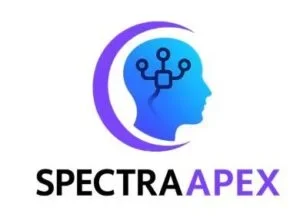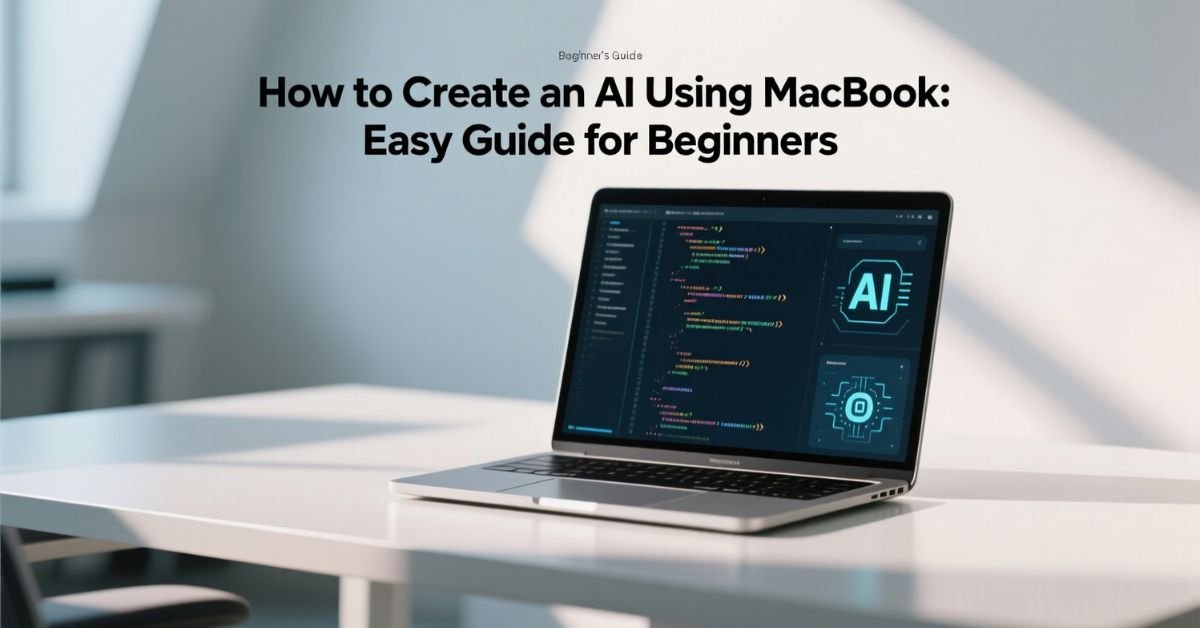Introduction:
Creating AI might sound technical, but if you have a MacBook, you already have a powerful machine capable of building amazing AI models. This beginner-friendly guide shows how to create an AI using a MacBook without needing a Ph.D. or expensive software. You’ll learn what tools to install, how to write your first AI code, and how to train and test your model.
Let’s get started!
AI Development: What You Need on a MacBook

Before building anything, make sure your MacBook is ready for development. You don’t need a top-tier M3 chip model; any MacBook with macOS 12 or above works fine.
Minimum Requirements:
| Component | Recommended Specs |
| macOS Version | macOS Monterey (12.0) or newer |
| RAM | At least 8 GB (16 GB is better) |
| Storage | 20 GB free space |
| Internet | Required for installing libraries |
| Processor | Apple Silicon (M1/M2/M3) or Intel i5 |
Make sure your system is updated. You’ll also need to install some software tools. Don’t worry, it’s easier than it sounds.
Step 1: Install Python and Essential Tools
Python is the most popular language for AI. Your MacBook already comes with Python pre-installed, but it’s usually outdated. Follow these steps to set up the right version.
How to install Python and Homebrew:
- Open Terminal (search it from Spotlight).
Install Homebrew:
bash
CopyEdit
/bin/bash -c “$(curl -fsSL https://raw.githubusercontent.com/Homebrew/install/HEAD/install.sh)”
Then install Python:
nginx
CopyEdit
brew install python
This gives you access to pip, Python’s package manager. Now, you’re all set to install the AI libraries.
Step 2: Set Up a Virtual Environment
A virtual environment keeps your AI project clean and separate from your system files.
Steps to create one:
bash
CopyEdit
python3 -m venv ai-env
source ai-env/bin/activate
Once you activate it, anything you install will stay within this environment. This makes it easier to manage your tools and avoid conflicts.
Step 3: Install AI Libraries
AI depends on strong libraries like TensorFlow or PyTorch. These tools help build and train models without starting from scratch.
Most-used libraries for AI:
| Library | Purpose | Install Command |
| NumPy | Math operations | pip install numpy |
| Pandas | Data handling | pip install pandas |
| Matplotlib | Graphs and visuals | pip install matplotlib |
| Scikit-learn | Machine learning algorithms | pip install scikit-learn |
| TensorFlow | Deep learning frameworks | pip install tensorflow |
| PyTorch | Another deep learning option | pip install torch torchvision |
Choose either TensorFlow or PyTorch, not both. If you’re a beginner, TensorFlow is often easier to start with.
Step 4: Choose the Right Code Editor (IDE)
You can write code in basic TextEdit, but it’s smarter to use a powerful IDE.
Best IDEs for MacBook:
| IDE | Description | Get It From |
| VS Code | Lightweight, powerful, customizable | code.visualstudio.com |
| PyCharm | Python-focused, great for beginners | jetbrains.com/pycharm |
Install VS Code and add the Python extension. This setup gives you syntax suggestions, error checks, and easy debugging tools.
Step 5: Write Your First AI Model
Let’s create a simple AI that predicts numbers using a basic linear regression model.
Sample Code:
python
CopyEdit
from sklearn.linear_model import LinearRegression
import numpy as np
# Sample training data
X = np.array([[1], [2], [3], [4]])
y = np.array([2, 4, 6, 8])
# Model training
model = LinearRegression()
model.fit(X, y)
# Make a prediction
prediction = model.predict([[5]])
print(f”Prediction for input 5: {prediction}”)
This small example shows how easy it is to create an AI using just a few lines of code on your MacBook.
Step 6: Train and Test Your AI Model
Once your model is working, test it using new data. AI is all about learning patterns from examples.
Tips to improve accuracy:
- Use more data
- Clean the data (remove errors or missing values)
- Tune hyperparameters
- Visualize results using Matplotlib
As you get better, you can move from simple tasks to complex ones like image recognition, language processing, or chatbots.
Step 7: Save and Reuse Your Model
Once trained, you can save your AI model and use it later without retraining.
Save model using joblib:
python
CopyEdit
import joblib
joblib.dump(model, ‘model.pkl’)
Later, you can load it like this:
python
CopyEdit
model = joblib.load(‘model.pkl’)
This is great when you’re building apps or websites that use AI behind the scenes.
Step 8: Build a Simple AI App on Mac
You can now create a basic app using your trained model. Use Streamlit, a Python tool that turns scripts into web apps.
Install and run Streamlit:
bash
CopyEdit
pip install streamlit
streamlit run your_script.py
This gives your AI model a user interface. Imagine a webpage where users input numbers, and your AI predicts the result live. You can build that easily.
Step 9: Optimize AI Performance on MacBook
MacBooks are powerful, but AI models can still be slow or memory-heavy.
Ways to speed up:
| Method | Description |
| Use NumPy arrays | Faster computation |
| Reduce dataset size | Use fewer but high-quality samples |
| Batch training | Train in chunks to save memory |
| GPU acceleration | Use M1/M2/M3 chips for neural nets |
The newer Apple Silicon chips (M1 and above) handle many AI operations with built-in GPU acceleration. You don’t need an external graphics card.
Step 10: Keep Learning and Expanding Your Skills
Creating AI on a MacBook is just the beginning. With every project, you’ll gain new skills.
What to explore next:
- Deep learning with TensorFlow/Keras
- NLP (Natural Language Processing)
- Computer vision with OpenCV
- Reinforcement learning
- AI for iOS apps using CoreML
Every AI tool you need is available for macOS. And since your MacBook supports powerful tools, you can scale up without switching devices.
Final Thoughts
Now you’ve learned how to create an AI using a MacBook, from setting up the tools to building and training your model. It’s not just possible, it’s easy, fun, and powerful.
Whether you’re a student, entrepreneur, or just curious about tech, your MacBook is a full-fledged AI lab. With Python, the right libraries, and a bit of creativity, you can build intelligent apps right from your desk.
FAQs
1. Can I create AI without coding on a MacBook?
Yes, there are drag-and-drop tools like Teachable Machine or Lobe, but learning Python gives you full control and flexibility.
2. Is MacBook Air powerful enough for AI?
Yes, especially models with the M1 chip or newer. For basic to mid-level AI tasks, MacBook Air is great.
3. Do I need an internet connection to build AI on a MacBook?
Yes, for downloading tools and libraries. But once set up, you can work offline too.
4. Which AI tools are best for Mac users?
Python, TensorFlow, PyTorch, and VS Code run smoothly on macOS without any issues.
5. Can I use AI for mobile app development on a MacBook?
Absolutely! MacBook supports Xcode and CoreML, perfect for building iOS apps with AI.
Nimra Kanwal is an SEO expert helping businesses grow through strategic content and smart search optimization. She writes for Spectraapex and contributes guest posts to top digital blogs.


1 thought on “How to Create an AI Using MacBook: Easy Guide for Beginners”